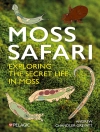Tissue engineering takes advantages of the combined use of cultured
living cells and three-dimensional scaffolds to reconstruct adult
tissues that are absent or malfunctioning. This book brings
together scientists and clinicians working on a variety of
approaches for regenerating of damaged or lost cartilage and bone
to assess the progress of this dynamic field.
In its early days, tissue engineering was driven by material
scientists who designed novel bio-resorbable scaffolds on which to
seed cells and grow tissues. This ground-breaking work generated
high expectations, but there have been significant stumbling blocks
holding back the widespread use of these techniques in the clinic.
These challenges, and potential ways of overcoming them, are given
thorough coverage in the discussions that follow each
chapter.
The key questions addressed in this book include the following. How
good must cartilage repair be for it to be worthwhile? What is the
best source of cells for tissue engineering of both bone and
cartilage? Which are the most effective cell scaffolds? What are
the best preclinical models for these technologies? And when it
comes to clinical trials, what sort of outcome measures should be
used? With contributions from some of the leading experts in this
field, this timely publication will prove essential reading for
anyone with an interest in the field of tissue engineering.
Daftar Isi
Chair’s Introduction (A. Caplan).
Tissue engineering of cartilage: do we need it, can we do it, is
it good and can we prove it? (L. Lohmander).
Embryonic development and the principles of tissue engineering
(A. Caplan).
The fundamentals of tissue engineering: scaffolds and
bioreactors (G. Vunjak-Novakovic).
Tissue-engineered versus native cartilage: linkage between
cellular mechano-transduction and biomechanical properties (J. Lee,
et al.).
From the preclinical model to the patient (E. Hunziker).
Mesenchymal stem cell therapy in joint disease (F. Barry).
Differentiated chondrocytes for cartilage tissue engineering (J.
Huckle, et al.).
Mesenchymal stem cells and bioceramics: strategies to regenerate
the skeleton (H. Ohgushi, et al.).
Bone marrow stromal cells and their use in regenerating bone (R.
Cancedda, et al.).
Studying the effect of different macrostructures on in
vitro cell behaviour and in vivo bone formation using a
tissue engineering approach (R. Dekker, et al.).
General discussion I
Cartilage repair with chondrocytes: clinical and cellular
aspects (A. Lindahl, et al.).
Qualitative and quantitative in vivo assessment of
articular cartilage using magnetic resonance imaging (E. O’Byrne,
et al.).
Hyaluronan-based scaffolds (Hyalograft¯® C) in
the treatment of knee cartilage defects: preliminary clinical
findings (A. Pavesio, et al.).
Quantitative analysis of repair tissue biopsies following
chondrocyte implantation (A. Hollander, et al.).
General discussion II: Tissue engineering using recombinant
human BMP2.
Final discussion and summing-up.
Index of contributors.
Subject index.
Tentang Penulis
The Novartis Foundation is an international scientific and educational charity which promotes the study and general knowledge of science and in particular encourages international co-operation in scientific research.












